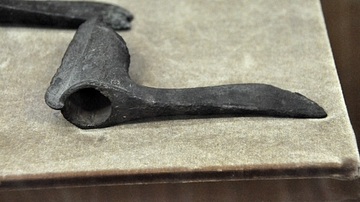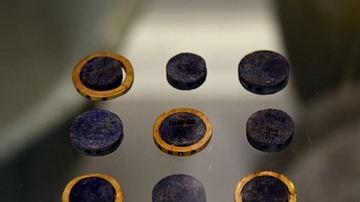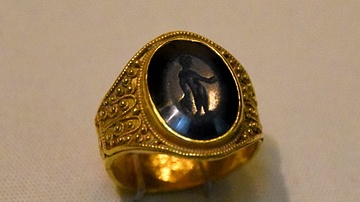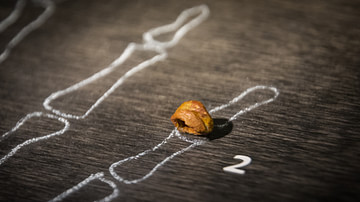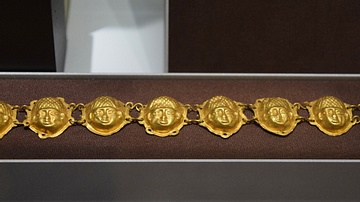Illustration
These rings were found on the fingers of a woman named Puabi, inside her grave. Puabi was a Semitic Akkadian woman from Ur, c. 2600 BCE, possibly a queen or priestess.
Two rings were made of gold wire that was twisted before being wound in a tight spiral, forming a cable-like pattern. The other two rings were inlaid with lapis lazuli. Early Dynastic Period, circa 2600 BCE. From the Royal Cemetery at Ur, Southern Mesopotamia, modern-day Iraq. Part of objects allotted to the British Museum from Ur excavation season 1927-1928 CE. (The British Museum, London).
About the Author
Cite This Work
APA Style
Amin, O. S. M. (2018, February 21). Mesopotamian Finger Rings. World History Encyclopedia. Retrieved from https://www.worldhistory.org/image/8112/mesopotamian-finger-rings/
Chicago Style
Amin, Osama Shukir Muhammed. "Mesopotamian Finger Rings." World History Encyclopedia. Last modified February 21, 2018. https://www.worldhistory.org/image/8112/mesopotamian-finger-rings/.
MLA Style
Amin, Osama Shukir Muhammed. "Mesopotamian Finger Rings." World History Encyclopedia. World History Encyclopedia, 21 Feb 2018, https://www.worldhistory.org/image/8112/mesopotamian-finger-rings/. Web. 13 May 2025.



